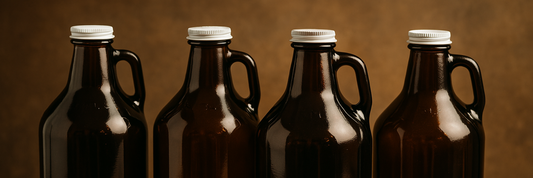Greaseproof paper is a versatile and essential product widely used in both domestic and industrial settings. Known for its ability to resist grease and moisture, it has become indispensable in food preparation, packaging, and storage. This article will provide a detailed overview of greaseproof paper, including its features, production process, applications, benefits, and more.
What is Greaseproof Paper?
Greaseproof paper is a type of paper specially treated to resist oil and grease. Unlike regular paper, greaseproof paper has a dense, non-porous surface that prevents grease from soaking through, making it ideal for wrapping, cooking, and packaging greasy or oily foods.
Its origins trace back to the 19th century when it was first developed to provide a hygienic and effective way to handle and store greasy items like butter. Over time, improvements in manufacturing have made it more durable, eco-friendly, and versatile.

Characteristics and Properties of Greaseproof Paper
Greaseproof paper stands out due to its unique properties, which include:
Grease and Water Resistance: Its dense fibers and special treatment prevent oils and liquids from penetrating, keeping food and surfaces clean.
Heat Resistance: Greaseproof paper can withstand high temperatures, making it suitable for use in baking and cooking. However, it should not be confused with parchment paper, which has a silicone coating for even higher heat resistance.
Can Greaseproof Paper Go in the Oven?
Food Safety: It is made from food-grade materials and does not release harmful chemicals, ensuring safety when used with edible products.
How is Greaseproof Paper Made?
The production of greaseproof paper involves several specialized steps to ensure its non-porous and grease-resistant properties:
Raw Material Preparation: The main raw material is high-quality pulp derived from wood or other natural fibers. The pulp is refined to eliminate any impurities and create a smooth texture.
High-Density Processing: The pulp is tightly compressed and refined to reduce porosity, creating a dense paper structure. This step is critical to achieving grease resistance.
Surface Treatment: To enhance its greaseproof properties, the paper is coated or treated with natural substances like alginate, CMC (carboxymethyl cellulose), or starch. This layer adds additional resistance to oils and moisture.
Quality Control and Cutting: Once the paper meets the desired specifications, it is rolled, cut into sheets or rolls of various sizes, and packaged for distribution.
What is Greaseproof Paper Used For?
Greaseproof paper has a wide range of uses, both in the kitchen and beyond. Some of the most common applications include:
In Cooking and Baking
- Lining baking trays: Prevents food from sticking and simplifies cleanup.
- Wrapping greasy foods: Ideal for fried items, pastries, and oily baked goods.
- Steaming foods: Used in certain cuisines to wrap ingredients for steaming, preserving moisture and flavor.
In Food Packaging
- Sandwich wrapping: Keeps sandwiches fresh and prevents grease from seeping through.
- Snack packaging: Often used for chips, cookies, and other takeaway foods.
- Lining takeaway boxes: Ensures food remains intact and visually appealing.
In Industrial and Commercial Use
- Widely used in the food industry for wrapping butter, margarine, and cheese.
- Serves as an inner liner for cartons or containers storing greasy products.
Benefits of Using Greaseproof Paper
Greaseproof paper offers numerous benefits, making it a popular choice in kitchens and industries:
Preserves Food Quality: By preventing grease and moisture from escaping, it maintains the texture, taste, and appearance of food items.
Hygienic and Convenient: It provides a clean and sanitary barrier, protecting food from contaminants and simplifying cleanup after cooking or packaging.
Eco-Friendly Options: Modern greaseproof papers are often made from biodegradable or recyclable materials, making them an environmentally responsible choice.
Versatility: Its wide range of applications makes it suitable for both home cooking and professional food service.

How to Choose and Store Greaseproof Paper
Selecting the right greaseproof paper and storing it properly ensures optimal performance and durability:
Criteria for Choosing Quality Paper
- Thickness: Ensure it’s thick enough to resist grease without tearing.
- Heat Resistance: Check the temperature limits if you plan to use it in baking or cooking.
- Eco-Friendliness: Look for biodegradable or recyclable labels to minimize environmental impact.
Storage Tips
- Keep the paper in a dry, cool place to maintain its greaseproof properties.
- Avoid exposure to direct sunlight or humidity, which can weaken its structure.
Conclusion
Greaseproof paper is an indispensable tool for modern kitchens and food industries. Its grease-resistant, versatile, and eco-friendly properties make it a valuable choice for cooking, packaging, and storage. By choosing the right type and using it effectively, you can enhance food safety, maintain quality, and contribute to a more sustainable environment. Whether you’re baking at home or running a business, greaseproof paper is a practical and reliable solution.









